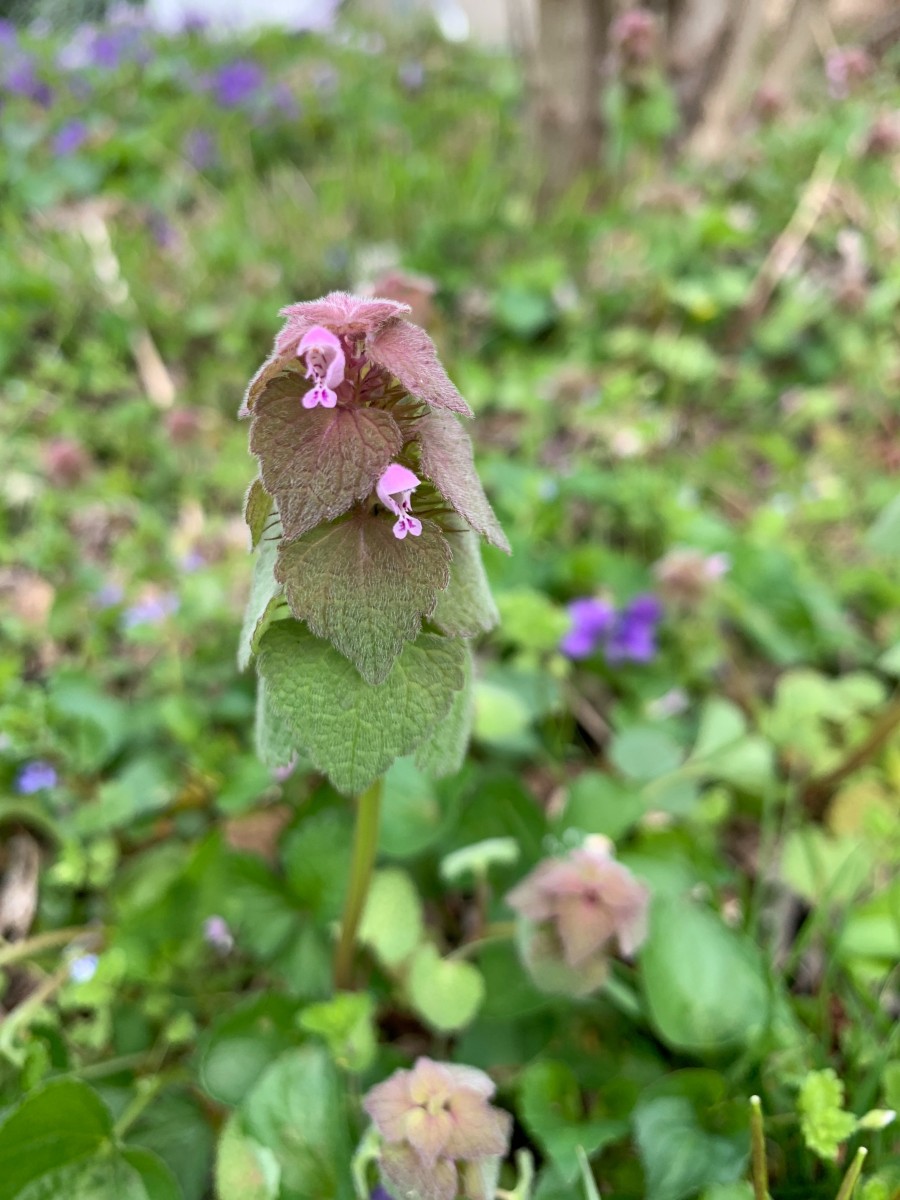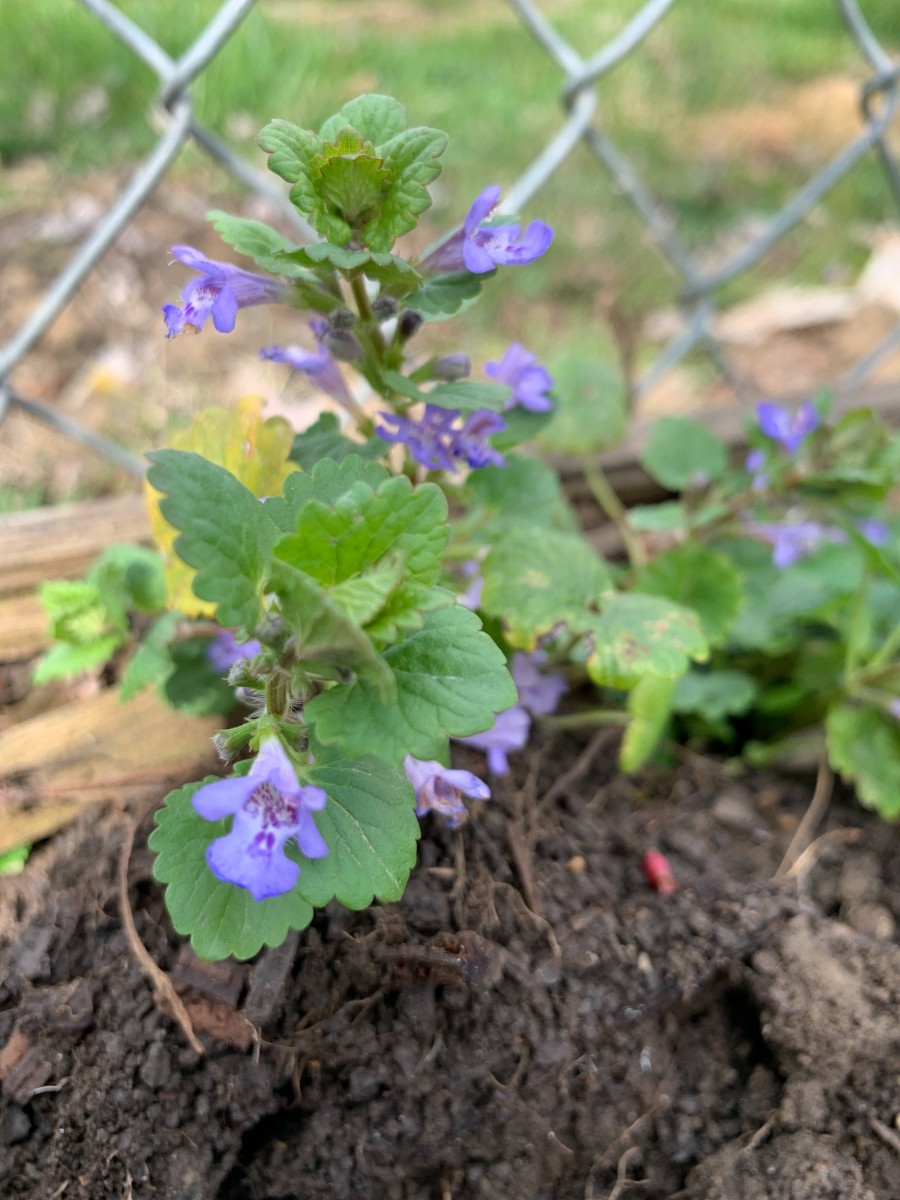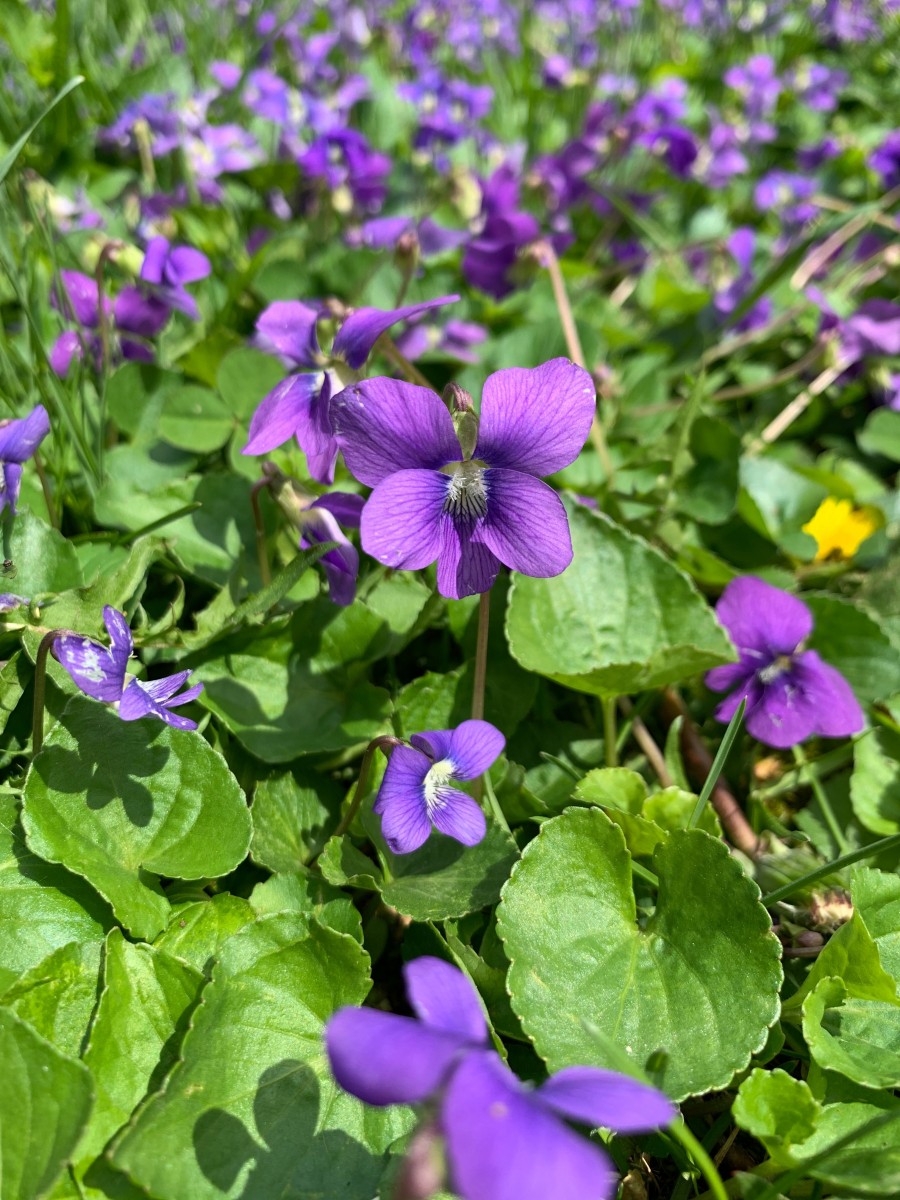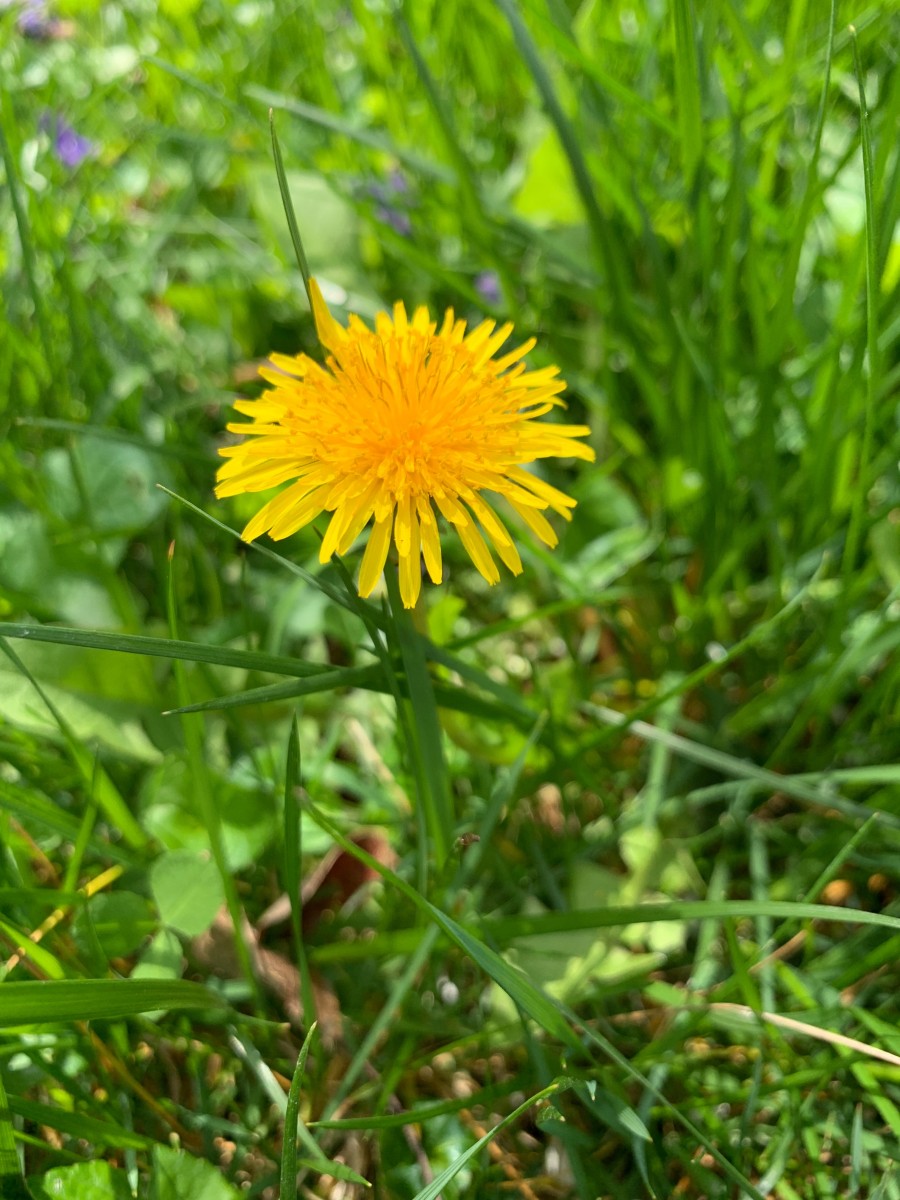Blog
What’s (Probably) Growing in Your Yard: Our Bioblitz Round-Up

By Connie O’Connor and Jason Neumann
We had a great time with our first-ever bioblitz—our Lawn Plant Identification Challenge! We totaled 349 observations of 175 different species in and around lawns in our region!

After red deadnettle, one of the most common plants posted in our Bioblitz Your Yard challenge was ground ivy (sometimes called creeping charlie). These two plants, together with henbit deadnettle, are all in the mint family of plants–their flowers make lots of pollen and nectar (the groceries pollinators need)—and lots of little blooms. If you grow peppermint or spearmint in an herb garden, you may have seen to flurry of insect activity around the flowers when they bloom in mid-summer. Red deadnettle, ground ivy, and henbit deadnettle bloom in early spring, right when early spring pollinators emerge.

Two other plants that were posted frequently during our bioblitz challenged were dandelions and blue violets. These two plants thrive by doing the limbo under the lawnmower—they’re perfectly content to flatten out on the ground once we’ve mowed off their upper leaves. Both dandelions and violets offer flat landing pad flowers, bright “land here” colors, and plenty of nectar and pollen for pollinators. What’s more, dandelions flowers attract more than 100 kinds of insects and common blue violets are a host plant for the caterpillars of fritillary butterflies!

The biggest takeaway from our bioblitz this weekend is that our lawns are essential to wildlife. Each yard is a patch in a quilt of homeowner habitat which functions as an essential source of food, shelter, and water across the region. We can learn to see “weeds” such as Creeping Charlie, Deadnettle, Clovers, Butterweed, and Hairy Bittercress for what they truly are: plants growing where we might not want them to grow, but where they are needed for native bees, and insects that contribute to the lives of the birds, mammals, amphibians, and reptiles with whom we share our space.
Stay tuned for more great resources over the coming weeks, starting with this awesome video from staffer Maria Jenkins about the lawn flower we all know but might not appreciate nearly enough: Dandelions!